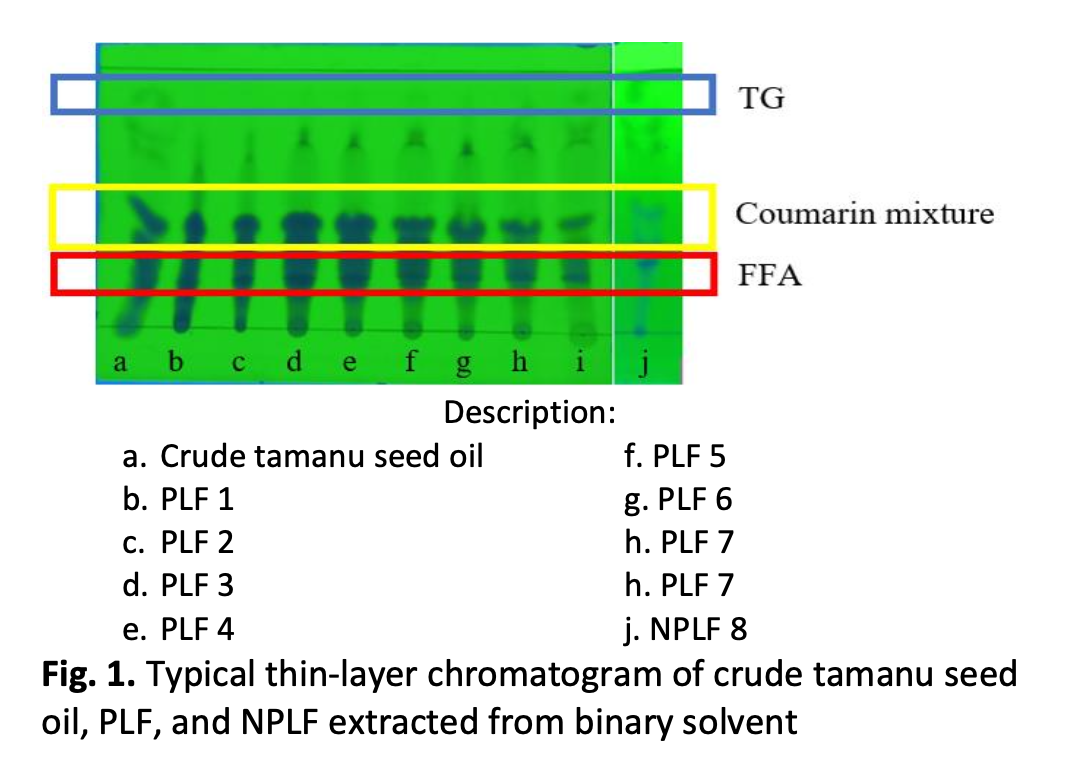Extraction of Coumarin Mixture from Tamanu Oil using Food-Grade
DOI:
https://doi.org/10.37934/arfmts.111.2.115Keywords:
Batchwise solvent extraction, calophyllolide, coumarin mixture, food-grade ethanol, phenolic compounds, tamanu oilAbstract
Indonesia’s flora and fauna are divided into four significant ecosystems: freshwater (rivers and lakes), marine, semi-terrestrial (mangrove and riparian), and terrestrial. Tamanu (Calophyllum inophyllum) is a member of the mangrove-associated plant species belonging to the mangosteen family. It is also known as Alexandrian laurel, bintangur (Malaysia), Borneo-mahogany, polanga (India), and nyamplung (Indonesia). The tamanu seed can produce oil with a 60-75% yield. It is applicable to treat various skin problems, including eczema, psoriasis, herpes, acne, haemorrhoids, and certain allergies. It is also beneficial as an antimicrobial, anticancer, anti-HIV, anti-inflammation, and anticoagulant agent. This is because tamanu oil contains bioactive compounds named coumarin. Previous works isolated coumarins with toxic solvents and using methods that are hard to scale up. Therefore, this study aims to know the best concentration of food-grade ethanol, the number of stages, and the solvent system to extract crude coumarin mixtures from tamanu oil by batchwise solvent extraction. The free fatty acid and triglyceride removal was also studied. The initial contents of free fatty acid, coumarin mixture, and triglyceride in tamanu oil were 25.87%, 11.96%, and 51.16%, respectively. Tamanu oil was extracted simultaneously with binary solvents (n-hexane and 70%/80%/90% aqueous food-grade ethanol) and a single solvent (96% food-grade ethanol). Each fraction was analysed by Thin Layer Chromatography (TLC) and High Temperature-Gas Chromatography (HT-GC). The best result was obtained using 80% aqueous food-grade ethanol, eight extraction stages, and a binary solvent system, which produced 48.64±6.57% purity and 88.68±1.38% recovery of coumarin mixture. Moreover, it was found that the method removed 64.15% of free fatty acid and 99.96% of triglyceride from the crude tamanu oil after eight stages of batchwise extraction.
Downloads

































